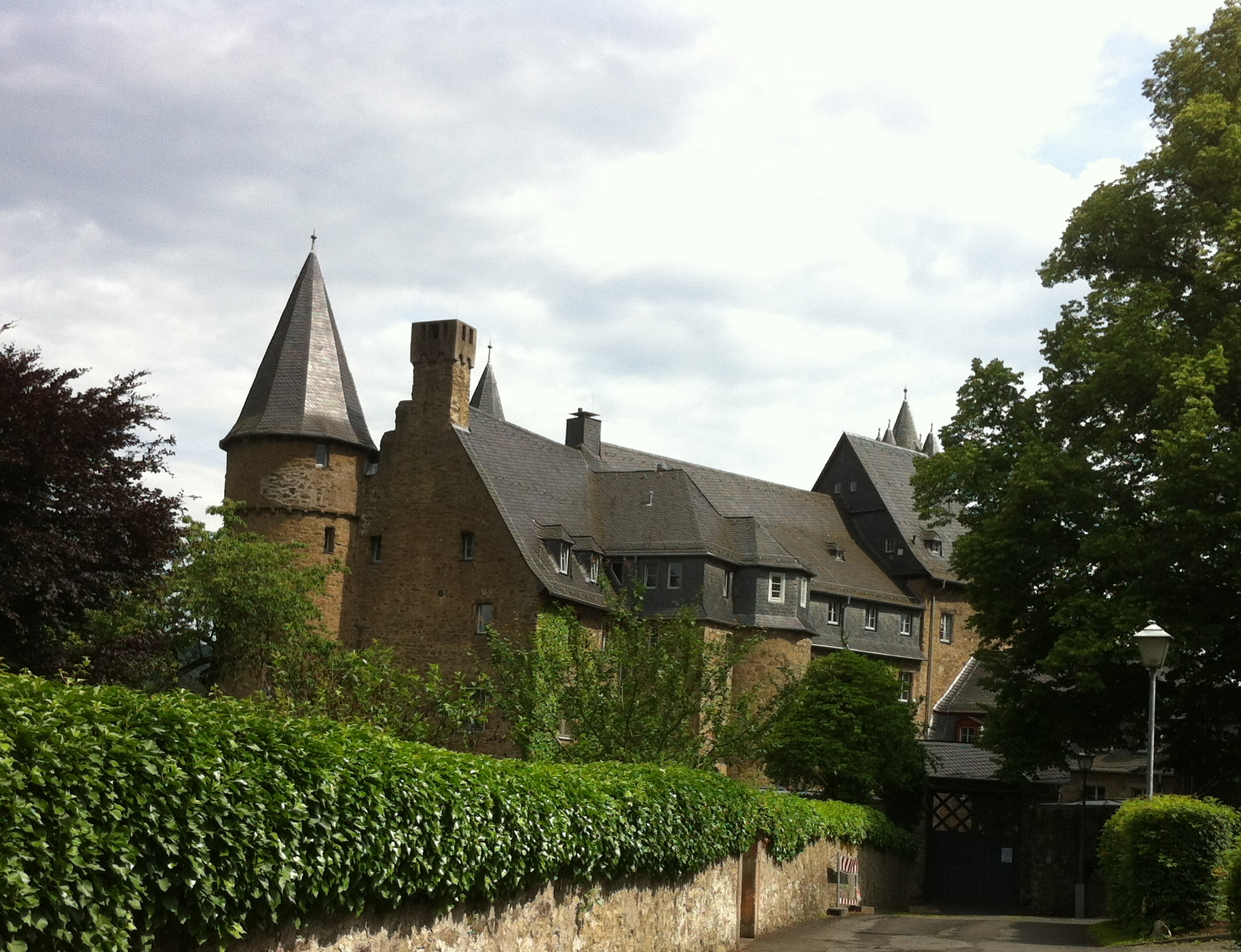Herborn Castle on:
[Wikipedia]
[Google]
[Amazon]
 Herborn Castle (german: Schloss Herborn) is situated right above the city of Herborn, in the Lahn-Dill district of the state of
Herborn Castle (german: Schloss Herborn) is situated right above the city of Herborn, in the Lahn-Dill district of the state of
Theological Seminary der EKHN (germ.)
{{coord, 50, 40, 57, N, 8, 18, 22, E, region:DE-HE_type:landmark_source:dewiki, display=title Castles in Hesse Buildings and structures in Lahn-Dill-Kreis
 Herborn Castle (german: Schloss Herborn) is situated right above the city of Herborn, in the Lahn-Dill district of the state of
Herborn Castle (german: Schloss Herborn) is situated right above the city of Herborn, in the Lahn-Dill district of the state of Hesse
Hesse (, , ) or Hessia (, ; german: Hessen ), officially the State of Hessen (german: links=no, Land Hessen), is a state in Germany. Its capital city is Wiesbaden, and the largest urban area is Frankfurt. Two other major historic cities are Dar ...
, Germany
Germany,, officially the Federal Republic of Germany, is a country in Central Europe. It is the second most populous country in Europe after Russia, and the most populous member state of the European Union. Germany is situated betwe ...
.
History
The Herborn castle was built as aMotte-and-bailey castle
A motte-and-bailey castle is a European fortification with a wooden or stone keep situated on a raised area of ground called a motte, accompanied by a walled courtyard, or bailey, surrounded by a protective ditch and palisade. Relatively easy t ...
, part of the fortification of the city of Herborn and connected to the city wall surrounding the city. The castle was the center of the Herborn March
March is the third month of the year in both the Julian and Gregorian calendars. It is the second of seven months to have a length of 31 days. In the Northern Hemisphere, the meteorological beginning of spring occurs on the first day of March ...
, which was a fiefdom the Counts of Nassau
Count (feminine: countess) is a historical title of nobility in certain European countries, varying in relative status, generally of middling rank in the hierarchy of nobility. Pine, L. G. ''Titles: How the King Became His Majesty''. New York: ...
received from the Landgrave of Hesse
The Landgraviate of Hesse (german: Landgrafschaft Hessen) was a principality of the Holy Roman Empire. It existed as a single entity from 1264 to 1567, when it was divided among the sons of Philip I, Landgrave of Hesse.
History
In the early Midd ...
.
The first documentation of the castle dates back to the 13th century. In 1251 the castle was renovated and at the beginning of the 14th century it was transformed into a manor house.
John VI, Count of Nassau-Dillenburg
Count John VI of Nassau-Dillenburg (22 November 1536 – 8 October 1606) was the second son of William the Rich and the younger brother of William the Silent. He has a special place in the history of the Netherlands because he is the male-lin ...
founded his Calvinist
Calvinism (also called the Reformed Tradition, Reformed Protestantism, Reformed Christianity, or simply Reformed) is a major branch of Protestantism that follows the theological tradition and forms of Christian practice set down by John Ca ...
university the Herborn Academy The Herborn Academy ( la, Academia Nassauensis) was a Calvinist institution of higher learning in Herborn from 1584 to 1817. The Academy was a centre of encyclopaedic Ramism and the birthplace of both covenant theology and pansophism. Its faculty ...
and placed it in the castle in 1584 . Some time after 1588,Herborn Academy The Herborn Academy ( la, Academia Nassauensis) was a Calvinist institution of higher learning in Herborn from 1584 to 1817. The Academy was a centre of encyclopaedic Ramism and the birthplace of both covenant theology and pansophism. Its faculty ...
the school was moved to the old mayor house. In later years, years, the castle was rarely used by its owner.
From 1806 the castle was not in use and fell into ruin. It was eventually restored by Ludwig Hoffmann Ludwig Hoffmann or Hofmann may refer to:
* Ludwig Hoffmann (architect) (1852–1932), German architect
* Ludwig Hoffmann (Waffen-SS) (1908–1945), Hauptsturmführer (Captain) in the Waffen-SS
* Ludwig Hofmann (footballer) (1900–1935), German ...
. Today it hosts the Theological Seminary
A seminary, school of theology, theological seminary, or divinity school is an educational institution for educating students (sometimes called ''seminarians'') in scripture, theology, generally to prepare them for ordination to serve as clergy, ...
of the Protestant Church in Hesse and Nassau.
Inside the castle there is a significant library of 68,000 works, at least 10,000 of which were printed before 1900. The library includes a collection of historical books as well printed materials from Herborn printers such as Corvin
The name Corvin comes from the Latin name Corvinus (disambiguation), Corvinus which derives from the Latin word corvus meaning raven, although the word today refers to the Corvus (genus), birds' genus including ravens and crows among others.
Corv ...
.
Bibliography
* Hessendienst der Staatskanzlei (ed) (1990), "Schlösser, Burgen, alte Mauern", Wiesbaden, S. 173f.,References
External links
Theological Seminary der EKHN (germ.)
{{coord, 50, 40, 57, N, 8, 18, 22, E, region:DE-HE_type:landmark_source:dewiki, display=title Castles in Hesse Buildings and structures in Lahn-Dill-Kreis